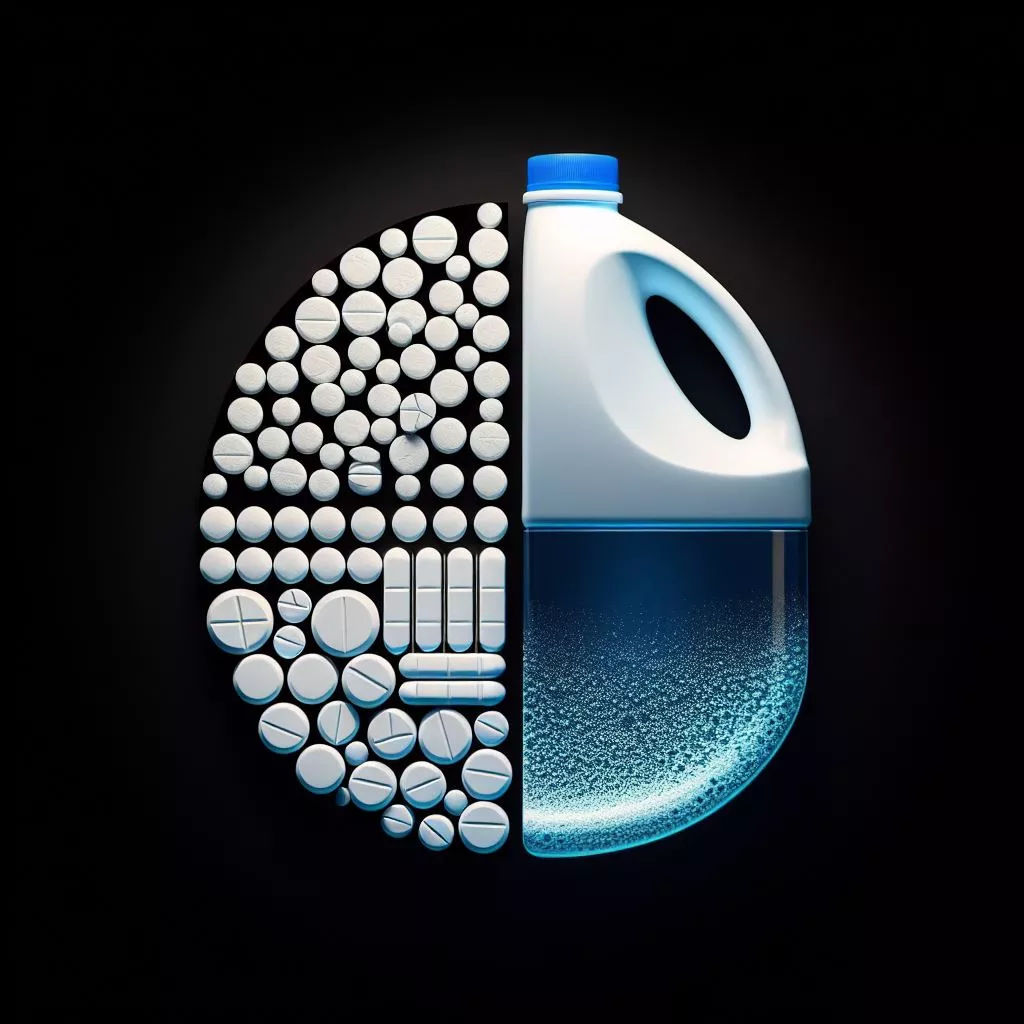To ensure the health and safety of swimmers, maintaining the water quality in a swimming pool is crucial. In this process, the most common methods of disinfection are chlorine tablets and liquid chlorine bleach. However, many people are unclear about the differences between the two. This article primarily explores the distinctions in using chlorine tablets and liquid chlorine bleach in swimming pools, providing insights for choosing the appropriate method based on individual needs.

Different Perspectives on the Differences:
Composition
Chlorine Tablets: The main component is trichloroisocyanuric acid, commonly known as trichloro. This is a relatively stable form of chlorine. Chlorine tablets are highly concentrated and slowly dissolve when placed in the skimmer or floating dispenser in the pool.
Liquid Chlorine Bleach: The primary active ingredient is sodium hypochlorite, a chlorine form that disperses directly and rapidly. Compared to chlorine tablets, liquid chlorine bleach releases chlorine more quickly, rapidly diffusing and immediately increasing the chlorine content in the water.
Chlorine Content
Chlorine Tablets: Release chlorine more persistently and slowly, designed to maintain a consistent residual chlorine concentration in the water over time. Due to their high concentration and slow dissolution, the chlorine content does not increase rapidly in the short term.
Liquid Chlorine Bleach: Chlorine concentration increases quickly but temporarily. When added to the pool water, it rapidly disperses, significantly raising the concentration of chlorine ions. This feature makes liquid chlorine bleach a convenient option for quickly adjusting chlorine levels, especially in cases where rapid adjustments are needed.
Stability
Chlorine Tablets: Contain stabilizers like cyanuric acid, helping protect chlorine from degradation caused by sunlight. This stability is particularly crucial for outdoor pools, extending the effectiveness of chlorine. The presence of cyanuric acid slows down chlorine loss, allowing it to persist in the water for an extended period, reducing the need for frequent additions, especially in intense sunlight.
Liquid Chlorine Bleach: Generally does not contain stabilizers. Therefore, when using liquid chlorine bleach, it is necessary to add stabilizers separately to prevent chlorine degradation in sunlight. Maintaining stability is more complex, as users must ensure an appropriate amount of stabilizer is present in the pool water to protect the effective use of chlorine. In outdoor pools, stability is key to ensuring the longevity of chlorine.
Frequency of Addition
Chlorine Tablets: Favored for their convenience, requiring less frequent additions. Once placed in the skimmer or floating dispenser, they slowly dissolve, reducing the need for daily monitoring and dosing. The gradual release characteristic minimizes the frequency of chlorine tablet use, allowing pool owners to intervene less frequently. This convenience helps maintain a stable level of chlorine ions in the water over a relatively long period, reducing maintenance workload.
Liquid Chlorine Bleach: Rapid and effective but may require more frequent additions, especially in heavily used pools or hot weather. If used frequently or in high temperatures, more significant amounts may need to be added to maintain the desired chlorine concentration.
In conclusion, both chlorine tablets and liquid chlorine bleach have their advantages in pool water applications, and the choice should be based on personal needs and preferences. Regardless of the chosen method, regular monitoring of the pool’s water quality and appropriate use of disinfectants are essential to ensure a clean and safe swimming pool. The results of this study are expected to provide valuable reference for the formulation of relevant policies regarding swimming pool water quality.

 Instant
Quote
Instant
Quote Email
Us
Email
Us